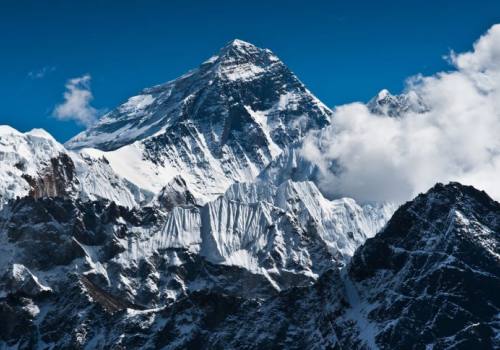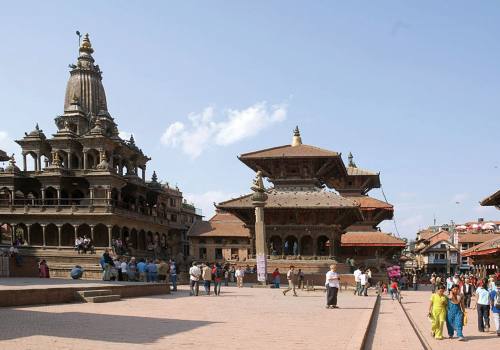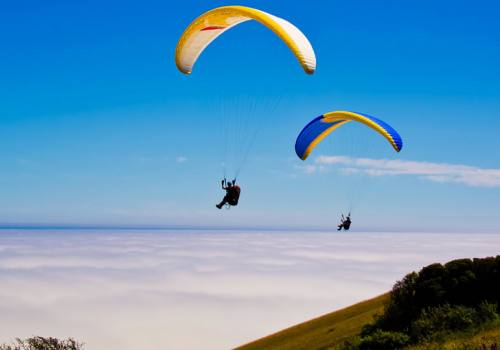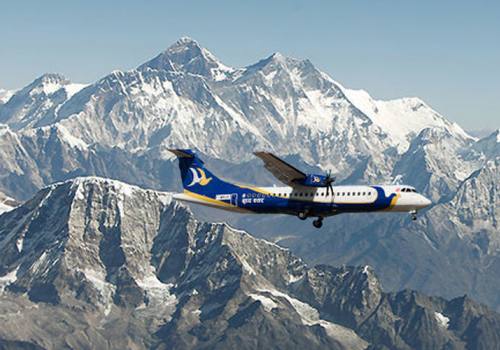History and Geography
Highest Eight of the World´s Tallest Mountains and the world´s oldest Hindu and Buddhist sites. While Kathmandu Valley is made of three ancient cities filled with enchanting medieval palaces, pagodas, temples, statues and stupas, the rest of the kingdom offers unparalleled adventure options with abundance in flora and fauna. As for its people -- from the Tharus that shares their land with the splendid Asian tuskers in the plains to the brave Yak herders of Dolpo -- they are as amazing as the land itself. Here in its tropical jungles, the Royal Bengal Tiger prowls, and higher up, the legend of the Yeti lives on. Although modernization has set in, the quintessence of ancient Nepal remains amongst its people.
Geography
Nepal, a sovereign independent Kingdom that is now called a democratic state governed by the people’s representatives, is bounded in the North by the Tibetan Autonomous Region of the People´s Republic of China, & in the south-east and west by India. The length of the Kingdom is 885 kilometers east-west and its breadth varies from 145-241 kilometers north-south. The country can be divided into three main geographical regions.
The Himalaya Region
The altitude of this region ranges between 4877m. - 8848m. It includes 8 of the highest 14 summits in the world which exceed altitudes of 8000 meters including Annapurna, Dhaulagiri and others.
The Hilly Region
This region accounts for about 64 percent of total land area. It is formed by the Mahabharat range that soars up to 4877 meter and stretches into the lower churia range.
The Terai Region(The Plains of Nepal)
The low-land Terai occupies about 17 percent of the total land area of the country. There are no seasonal constraints when traveling in and through Nepal. Even in December and January, when the winter is at its severest, there are compensating sky blue horizons & bright sunshine even on the coldest of days that give vent to brilliant & magnificent views.
Nepal’s glorious History
Nepal is a country with a long historic tradition is a blend of a number of medieval principalities. Before the campaign of national integration launched by Nepal’s founding King Prithvi Narayan Shah, the Kathmandu Valley was ruled by the Malla Kings, whose contributions to art and culture were indeed great and unique to that period & still existent till this day. In 1768 AD, the Shah dynasty ascended the throne of the unified kingdom. His Majesty the late King Birendra Bir Bikram Shah Dev was the tenth King in lineage to the Shah dynasty.
The new democratic constitution of the kingdom was promulgated on November 9, 1990. Nepal is one of the founder members of South Asian Association for Regional Cooperation {SAARC}, of which the third summit was held in Kathmandu in November 1987.
The friendly People in Nepal
Nepal has a population of more than 25 million people made of different races living in different regions, with diverse culture, languages and dialects.
The Gurungs and Magars live mainly in the west. The Rais, Limbus and Sunuwars inhabit the slopes and valleys of the Eastern mid hills. The Sherpas, Tamang are live in the Himalayan region of the ‘Khumbu’ & ‘Langtang’. The Newars constitute an important ethnic group of the capital valley Kathmandu.
There are Tharus, Yadavas, Satar, Rajbanshis and Dhimals communities that can be found in the Terai region of eastern Nepal. The Brahmans, Chhetris and Thakuris are spread generally over all parts of the country.
Religion & Culture
Hinduism and Buddhism constitute the two major religions of Nepal. A remarkable feature of Nepal is the religious homogeneity what exists, particularly between the Hindu and Buddhist Communities. Apart from the Hindus and Buddhists, Muslims form the third largest religious group. Christianity makes up 2-3% of a following of the faith in Nepal, however, this percentage has increased even more today. The exquisite medieval Art & Architecture of the Kathmandu Valley vividly reflect the artistic ingenuity and the religious traditions of the people.
Language
The Nepali language is National Language and official language of Nepal. 123 different languages are speak in Nepal by 125 different cast group. The educated people speak and understand English as well. The people who are involved in Tourism industries they can speak international languages:- English, Japanese, Chinese, Spanish, Dutch, German, Russian, French etc.
Climate
Nepal has four climatic seasons that are namely:
1. Spring: March-May
2. Summer: June-August
3. Autumn: September-November
4. Winter: December-February.
The rain shadow zones over Nepal fall in the upper Mustang, Rolpa & Dolpa regions of west Nepal & these regions are ideal for trekking all year round as rain doesn’t fall in these areas
Pick the perfect activity for the next holiday!

Trekking in Nepal
Namaste Nepal Travels Heartly welcome to all…

Tours in Nepal
Tours in Nepal with Namaste Nepal Travels provides…

Adventure Activities
Nepal is most popular Destination for adventure…

Mountain Flight
Namaste Nepal Travels and Tours Provides daily Mountain Flights service.…
Certificates & Partners









